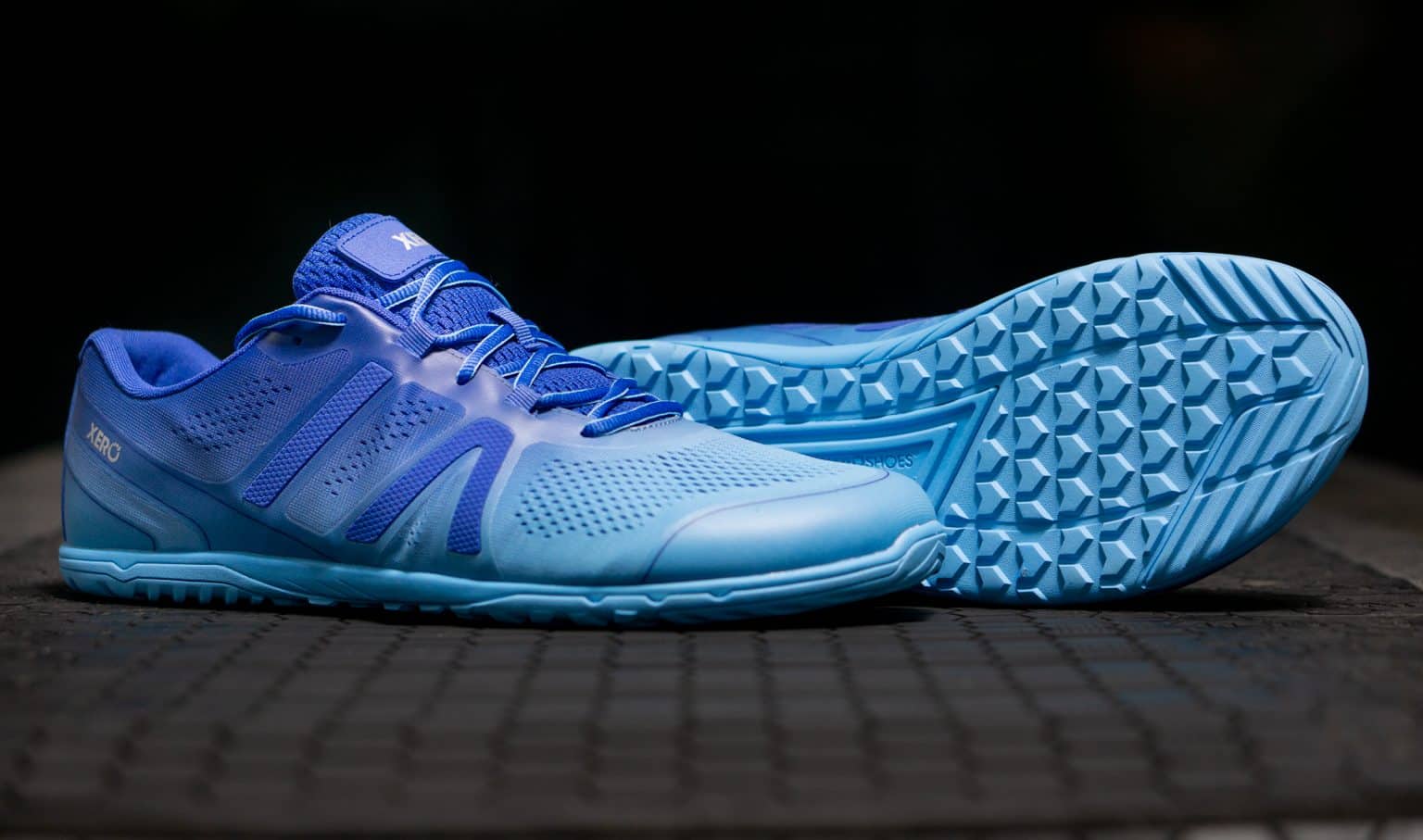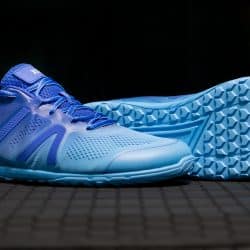The original Xero Shoes HFS (men’s and women’s) has been one of my favorite shoes. It’s often the first shoe I reach for when heading out the door and has been used for sports, travel, and leisure. When Xero Shoes released the HFS 2 (men’s and women’s), I was very curious to try out a pair and wondered what would change from version to version. What follows is my impression of the Xero Shoes HFS II.
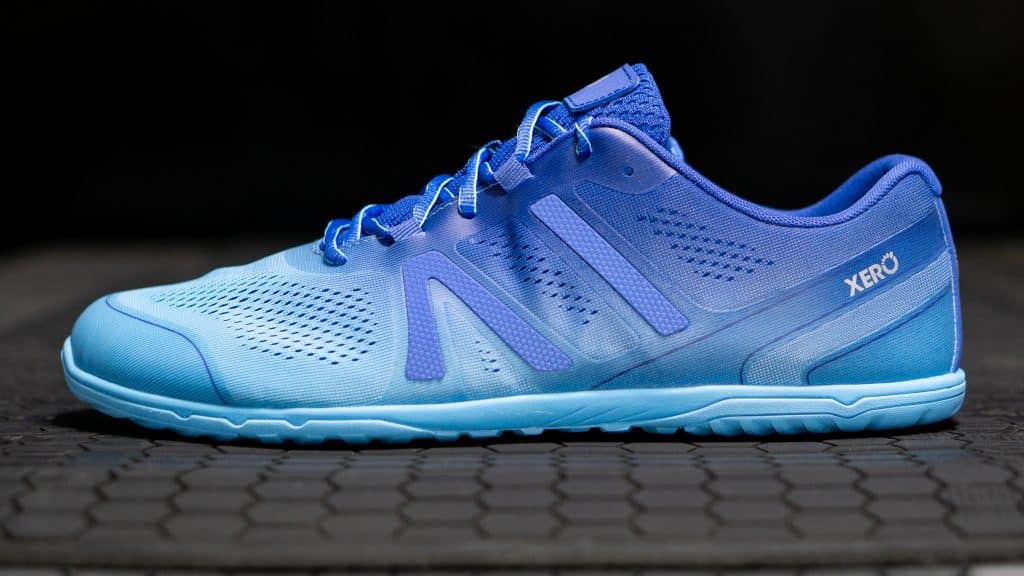
Is the Xero Shoes HFS II One of the Best Barefoot Shoes?
When I reviewed the original HFS I pointed out how good minimalist barefoot shoes don’t require much:
- a zero drop heel-to-toe height differential
- generous forefoot width
- flexible and lightweight materials
- a sensible lacing system
- lateral support (possibly)
The HFS 2 still checks these boxes, but isn’t quite as lean as the original, despite economical upgrades. Let’s get into the details.
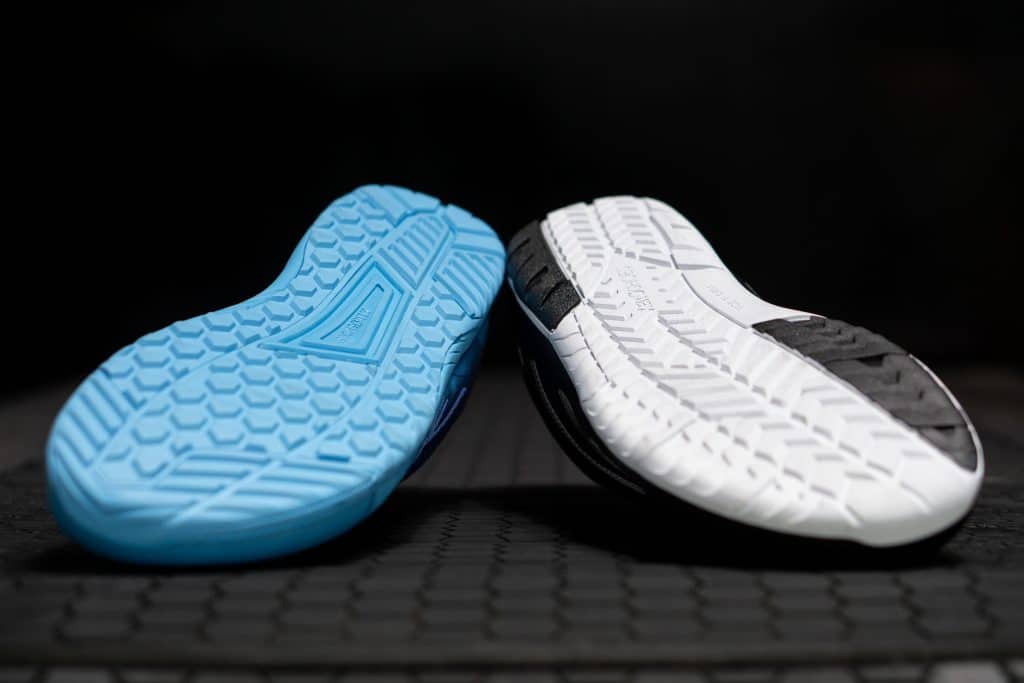
Is the Xero Shoes HFS 2 Good for Running? How About Barefoot Running?
I’ll answer this popular question by addressing the HFS 1 first. Was the original Xero Shoes HFS good for running? Yes, but primarily if the goal was barefoot-style running and training. The original HFS was truly a minimalist shoe; it had about as much cushioning as a barefoot sandal, which is basically zero — most people don’t want to pound out mile after road mile in true barefoot shoes. The proprioception was high, but the foot strike forgiveness was minimal and a bad footfall could send a jolt up through the knee, hip, and lower back. As I’ve pressed into my 40s as a 200-pound, 6’7″ dad runner, the HFS was leaner than I wanted for road and longer treadmill running (I used to for spot run training).
The HFS 2 is a much better running shoe than the HFS 1 if the goal is more general running with higher mileage. I can knock out miles on a treadmill and run down the road while enjoying some of the forgiveness that comes from the EVA (a versatile foam rubber material Xero added to the outsole). So, yes, the HFS II is good for running, and I think better for broad running usage versus the HFS 1 which was more like a training tool for barefoot running diehards. It’s still a minimalist shoe which comes with some qualifiers compared to typical running shoes, but this is a nice tool to have in the running toolbox!
HFS II Sole, Traction, and Weight
The most obvious difference between the HFS editions is the outsole. The new version features a more aggressive, tire tread-inspired outsole with a thicker profile that incorporates the aforementioned EVA foam. Xero Shoes says, “The HFS II sole looks thick, but it’s an illusion.
We’ve added a thin BareFoam™ layer for extra protection and wrapped it, cup-like, around the upper giving the HFS II a more familiar-looking profile.”

The first edition of the Xero Shoes HFS weighed in at 7.9oz for men (6.5oz for women) with a stack height of 7mm—a very lean shoe. The HFS II adds the two-part EVA outsole, which increases cushioning and raises the weight to 8.3oz for men (6.7oz for women) with a 9mm stack height—still quite lean.
In plain language, Xero Shoes made the HFS 2 more plush than the original, with some added lug definition. Having used both shoes in varying conditions, it is remarkable how the additional EVA material changes the shoe experience.
For example, despite some initial reservations about lateral forces, I’ve played quite a lot of basketball in the HFS I. It has almost no cushioning, but the grounded feel and grip make for some intense basketball training sessions (if landing carefully). I’m not saying this is a great shoe for basketball, but I have used it for hoops a good amount (again, carefully). Ballers, check out the Xero Shoes x1 barefoot basketball shoe!
One of the first things I tried with the HFS 2 was playing some basketball. Within a couple of trips up and down the court, I knew this shoe was a no-go for hoops and high lateral force—there’s simply too much side-to-side play created by the additional cushion.
But the HFS isn’t created with basketball in mind; it follows a philosophy more suited for lifestyle, general gym use, and some run training. So, I think the additional cushion will appeal to many wearers — especially for road running.
The more prominent tread is even suitable for leaving paved surface and hitting some gravel or certain trails. Much of what makes a running surface more or less suitable to lean shoes like these will come down to a runner’s philosophical views about running shoes!
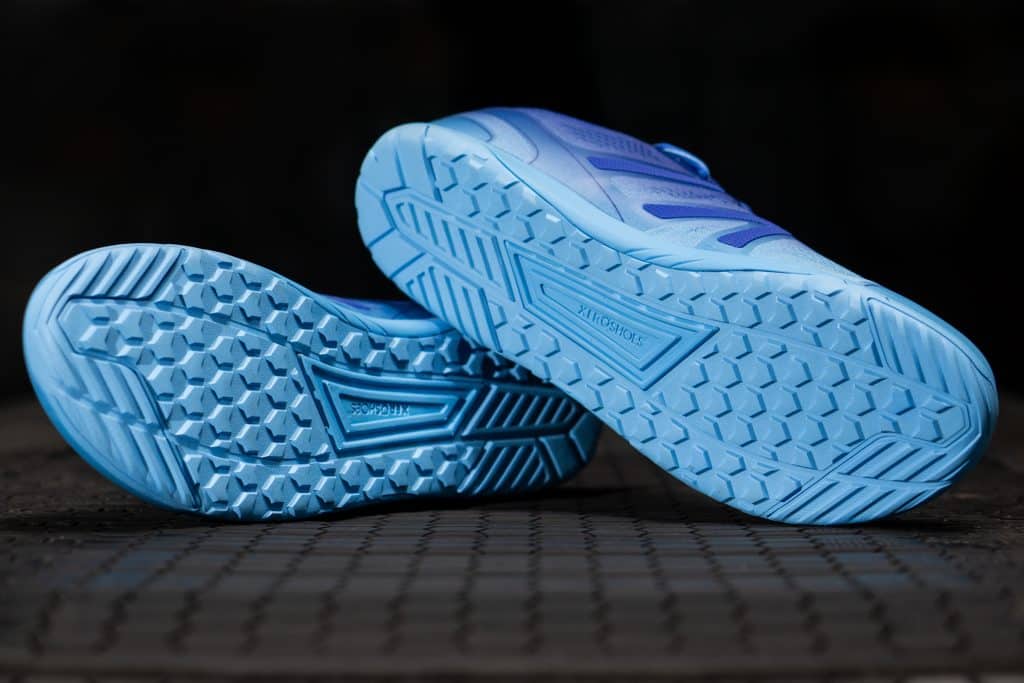
HFS 2 Uppers and Lacing
Xero Shoes come with an under-appreciated feature in the uppers which is a skeletal-like cinching mechanism borrowed from huarache sandals. In fact, when I first met the founder of Xero Shoes (Steven Sashen), he had launched with a sandal line up. This foundation is what lead to the idea of running the lacing system through a couple of looped tabs on either side of the foot. Tightening the laces, tightens the huarache system around the outside of the foot since the tabs anchor to the sole of the shoe. It’s clever, and very streamlined compared to the many stiff and rigid trainers seen in the gym (for example Nike Metcons).
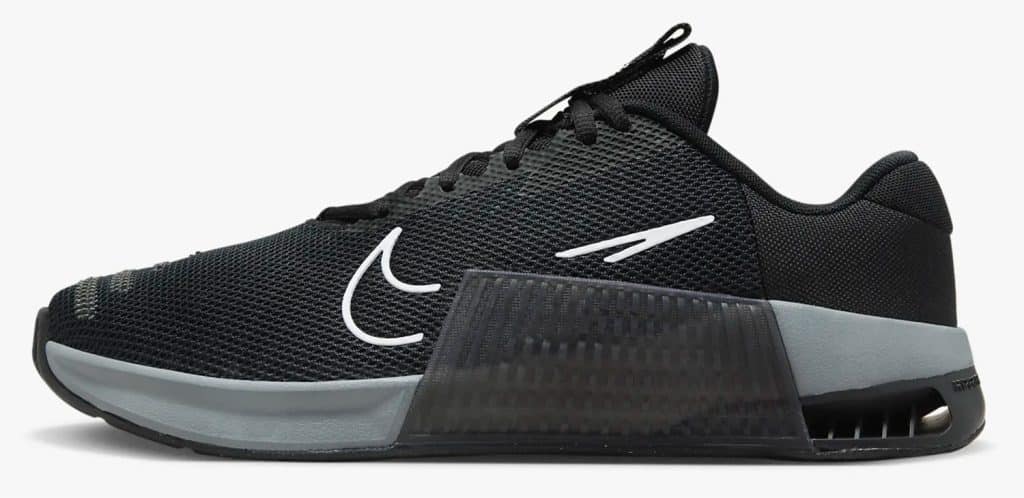
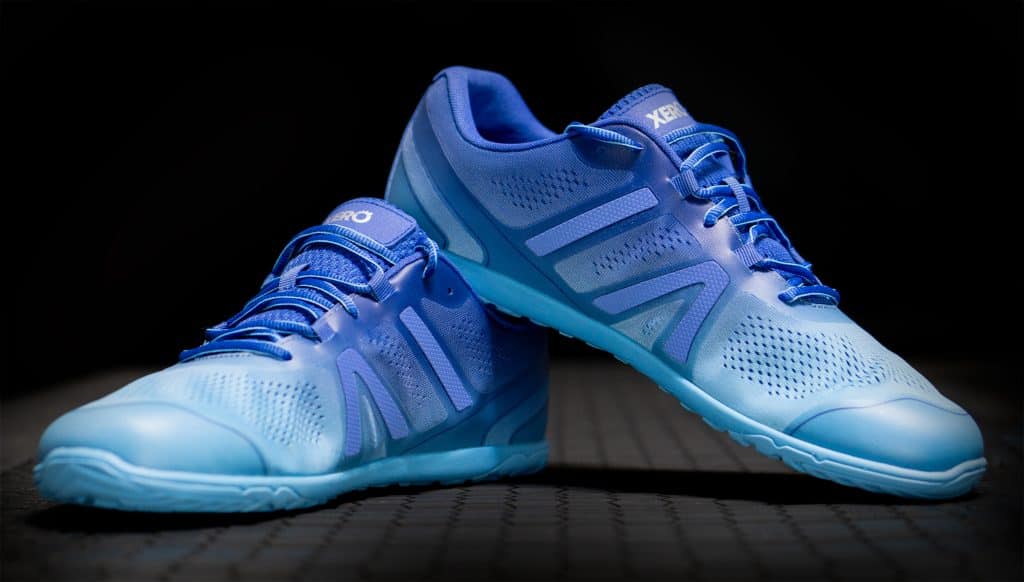
Let’s be clear, Xero markets the HFS line as running shoes, they have other models like the Prio, Prio Neo, Forza Trainer, and 360 which are more targeted as trainers but many people use the HFS as a gym training shoe.
The shoelaces on the HFS 2 are nice. They are rounded, but very soft and compressible — not stiff like some other models like the 360. I found myself wishing the lacing was an inch or two longer on my size 14s, but they work and lacing is an easy change for anyone who wants a different lace. I changed the laces on my Scramblers for a few bucks.
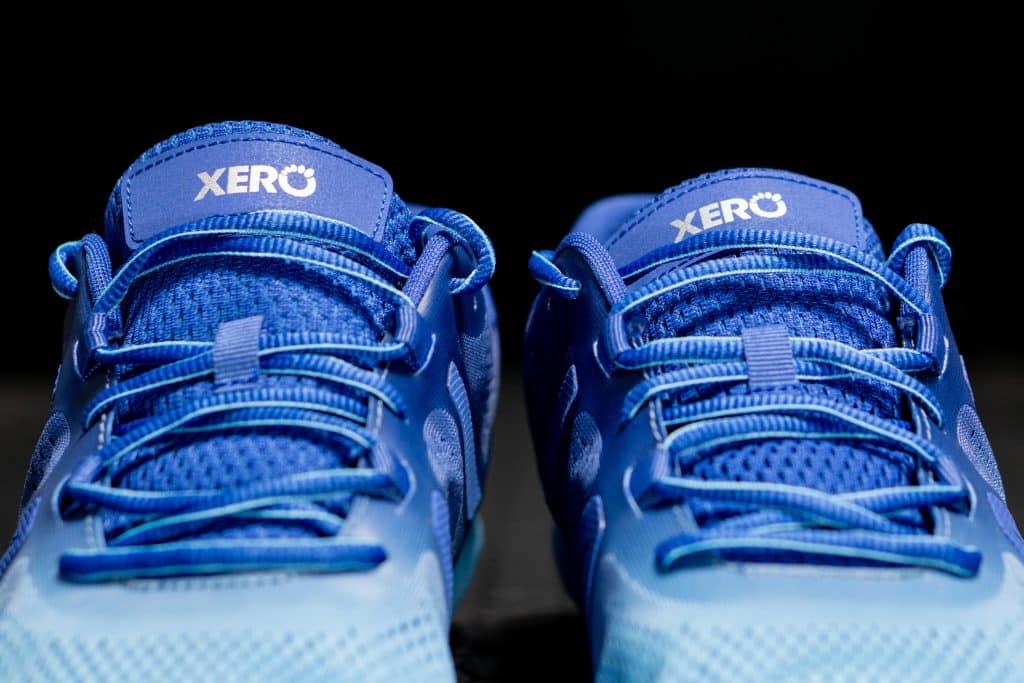
HFS II Style
Some minimalist shoes leave a lot to be desired in the aesthetics department. The HFS 2 line has a modest, pleasant style and some nice colorways to chose from. I find them to be a good looking shoe, though the original seemed a tad more unique with their grounded look (subjectively splitting hairs here). The blue lolite aquarius gradient color is a great choice for those looking to make their exercise outing fun — my wife tells me they are the coolest looking shoes I’ve ever owned! For travel, I’d reach for a more muted option like a gray or white colorway.
The HFS 2 has a “more familiar-looking profile” as the Xero Shoes website puts it. If you wear the HFS 2 around town, you won’t look like a weirdo. For those of us who have worn Vibram Fivefingers around, “weird” is either a badge of honor or annoying. I’m okay with looking semi-normal.
HFS 2 Insole and Stitching
Xero Shoes can be worn with or without their insoles. Removing the insole insert on many shoes reveals an unfinished and uncomfortably stitched insole. This is not the case with the HFS 2 or any Xero Shoe. The insole is a comfortable and very light weight material full of honeycomb-like holes to keep the weight down. I like to keep the insoles in, but more groundfeel is easy to achieve simply by removing the insert.
The stitching without the insert is thoughtful and the Xero Shoes logo is even stamped under the insert, showing the attention to detail.
HFS II Performance
I find the HFS models well-equipped for most exercise and lifestyle activities. However, these excel as straight-on shoes. Forward moving activities without intense lateral movement and force would be ideal for the HFS 2, especially.
Both models are minimalist running shoes, they take deliberate adjustment to use and for many people should only represent lower mileage training use. You won’t see a lot of HFS wearers completing your next road half or full marathon (it can definitely be done with targeted training!).
Who Should Buy the Xero Shoes HFS II
The HFS 2 is worth trying if you:
- want to incorporate some barefoot style running into your road running, but still want some more cushion than the HFS 1 provides
- want a shoe which works for exercising but also for general lifestyle use – it looks good around town
- read Born to Run and are curious about zero drop shoes
- are following the Kneesovertoesguy ATG training plans
- want to experiment with strengthening your arches and lower legs
Learn more about the men’s and women’s HFS II on the Xero Shoes website.

